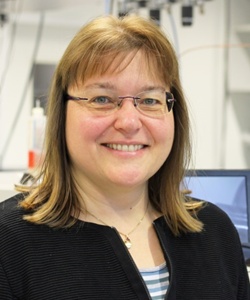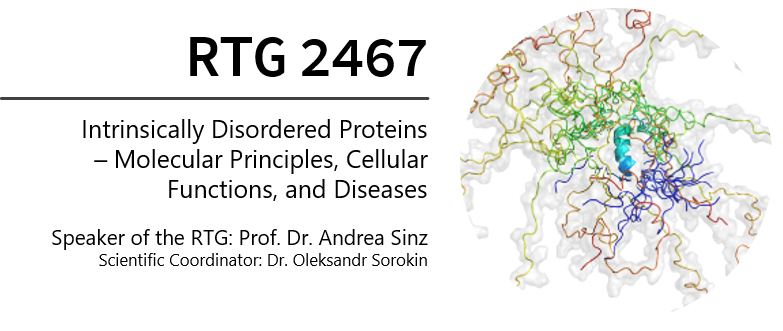
received a degree in Pharmacy from the University of Tübingen, Germany, in 1993. She obtained her PhD in Pharmaceutical Chemistry from the University of Marburg, Germany, in 1997. From 1998-2000, she was a post-doctoral fellow at the National Institutes of Health in Bethesda, MD, USA, where she became introduced into chemical cross-linking techniques and protein mass spectrometry. After research stays at the Universities of Gießen and Rostock, she became head of a junior research group at the University of Leipzig, Germany (2001-2006). Since 2007, she is Full Professor and head of the Department of Pharmaceutical Chemistry and Bioanalytics at the MLU. She is an expert in chemical cross-linking and mass spectrometry for studying protein conformations and protein-protein interactions. Her research interests are the development of novel analytical strategies and reagents to advance the cross-linking/MS approach. From 2017 to 2020, she was president of the German Society for Mass Spectrometry (DGMS). She is the spokesperson of the RTG 2467.
Project within the RTG
Characterization of conformations and IDP interactions of full-length tumor suppressor p53 in the cellular environment
p53 is a stress-response protein that functions primarily as a tetrameric transcription factor and is commonly referred to as the “guardian of the genome” (Retzlaff et al., 2013). Approximately 40% of p53’s structure is intrinsically disordered, making it challenging to be studied by classical methods of protein structure analysis. It regulates a large number of genes following a variety of insults, such as DNA damage and oncogene activation. Activated p53 suppresses cellular transformation, mainly by inducing growth arrest, apoptosis, DNA repair, and differentiation in damaged cells. p53 consists of an N-terminal transactivation domain, a DNA-binding domain (DBD), a tetramerization domain (TET), and a C-terminal regulatory domain. Its two folded regions, DBD and TET, are linked and flanked by IDRs at the N- and C-termini (Joerger & Fersht, 2008). The vast majority of available structural data for p53 is limited to its structured domains, while the IDRs of p53 remain still understudied and their role in exerting p53’s functions in cells and organisms is largely unknown. Especially the C-terminal domain of the full-length p53 tetramer is still poorly understood due to its high degree of disorder, but it can adopt a variety of secondary structures when bound to different proteins. There are several known PTMs in p53’s C-terminal domain, including phosphorylation and acetylation, which are thought to contribute to the stabilization of p53 by blocking ubiquitination (Meek & Anderson, 2009).
Literature references
Joerger, A. C., & Fersht, A. R. (2008). Structural biology of the tumor suppressor p53. Annual Review of Biochemistry, 77, 557-582.
Website: http://agsinz.pharmazie.uni-halle.de
